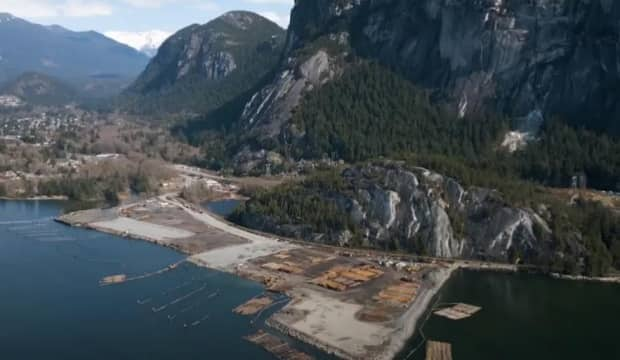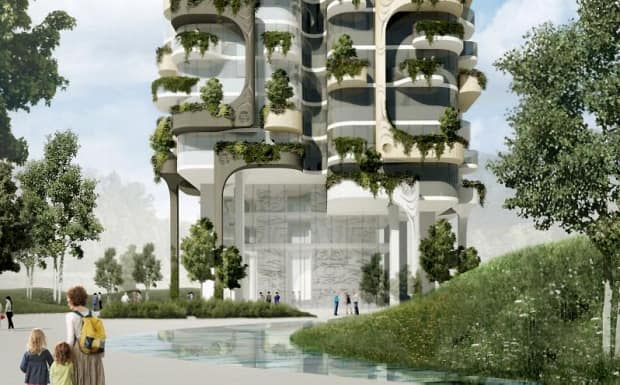Squamish Nation puts year-long pause on development proposals, begins work on land-use masterplan

The Squamish Nation says it will embark on a land-planning process over the next year to determine how best to develop almost 1.5 square kilometres of reserve land for financial and social benefit.
In a shift from what it termed as a "relatively reactive" approach to development, the nation announced in a news conference Wednesday that its council has approved a moratorium on receiving third-party proposals from developers for one year.
Instead, it will use the time to develop strategies for 358 acres (1.45 square kilometres) of its land, a square kilometre of which is located on the North Shore, including Xwemélch sten at the foot of the Lions Gate Bridge in West Vancouver.
Mindy Wight, CEO of Nch'kay, the Squamish Nation's economic development corporation, acknowledged that the project is a purposeful move away from how it formerly approached planning and development.
"To date, we have been relatively reactive in receiving proposals from potential partners and rejecting or accepting them. But that way of planning is over," she said.
She says the moratorium will allow the nation to determine how best to unlock the economic value of its assets in a way that reflects Squamish leadership, sovereignty and values.
"The economic development of our assets is not just about today. It's about our future," said Khelsilem, Squamish council chair.
"We will never sell our lands. We have fought for decades to see the return of our lands and we continue to advance the return and repatriation of our lands back to our community."

The nation says the long-range plan will work to meet the needs of residents through community development, including parks, schools, community centres, affordable housing, health-care centres and industrial zones.
Wight says the nation has issued an expression of interest in hopes of identifying experienced consultant teams to help them in the master-planning process.
She says consultants will be selected based not only on their abilities, but also on their demonstrated commitment to reconciliation and the development of long-term, trusted relationships with Indigenous communities.
Sen̓áḵw development beginning of new era: councillor
In September, the Squamish Nation broke ground on the Sen̓áḵw development at the foot of the Burrard Street Bridge in Vancouver, land that was returned to the nation by the courts in 2003.

The nation says the development is the largest Indigenous-led housing and retail development in the history of Canada. Once completed, it will be home to 6,000 residential units on 11 acres of land.
"[Sen̓áḵw] was always intended to be the beginning, that more was to come from the Squamish Nation as we look to the future," said Khelsilem.
The Squamish Nation consists of 23 villages — totalling an area of more than 28 square kilometres — that are located across its traditional territory, which extends around the shores of the Burrard Inlet, English Bay, Indian Arm and Howe Sound, and includes parts of Metro Vancouver, Gibsons and the District of Squamish.


